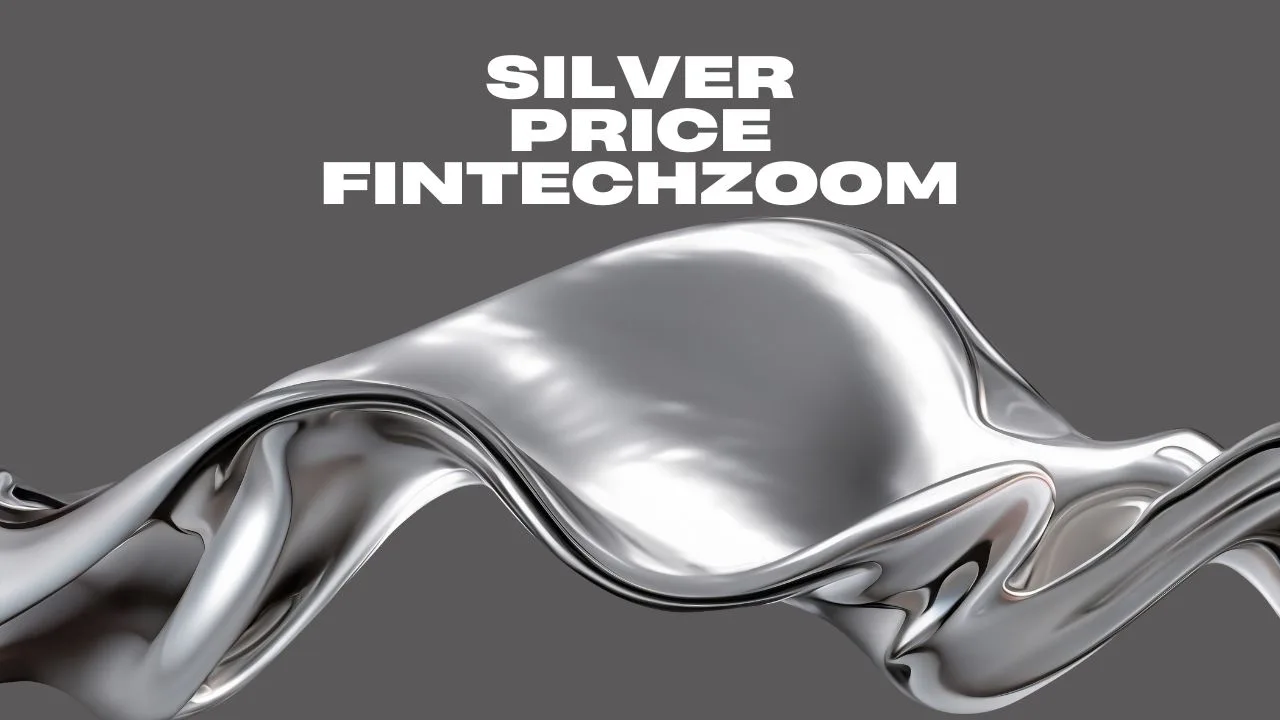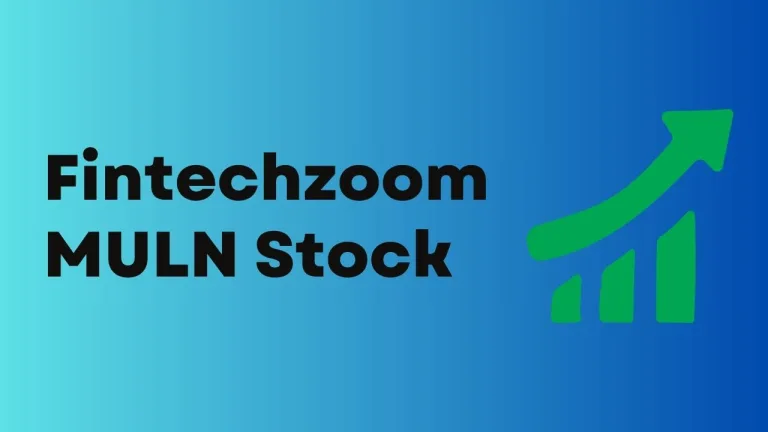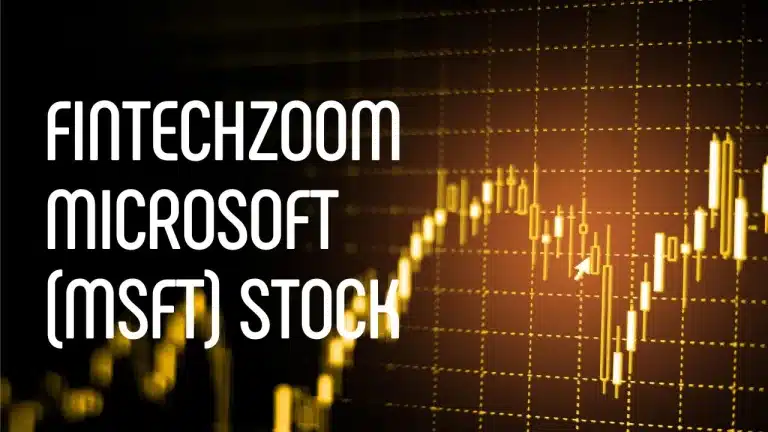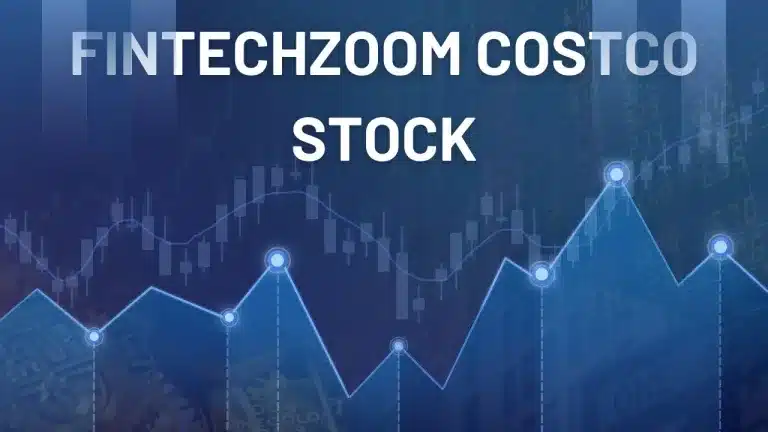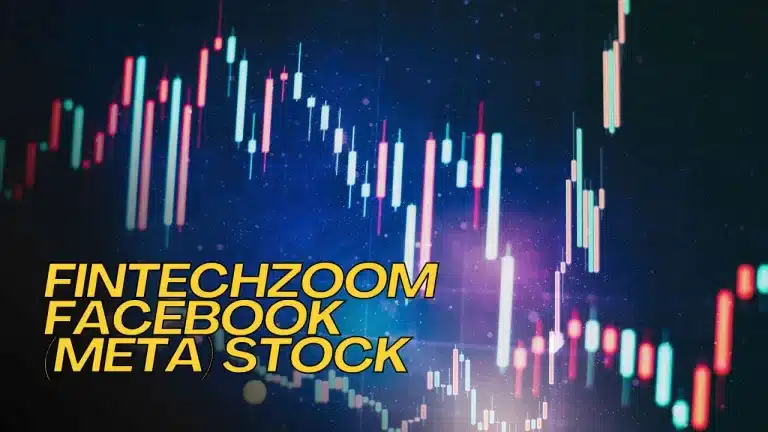Silver Price Fintechzoom: Forecast and Investment Strategies
Silver, often overshadowed by gold, remains a vital commodity in the global market with its price affected by a mix of economic indicators, geopolitical events, and industrial demand. In recent years, silver has seen a variety of price shifts, influenced heavily by global uncertainties and economic policies. In this analysis on Fintechzoom, we’ll analyze Silver price current market and future outlook.
Recent analyses indicate that silver prices could fluctuate significantly due to the upcoming US presidential election, changes in monetary policy by major central banks, and ongoing geopolitical tensions, especially related to conflicts in Eastern Europe and the Middle East. For instance, Fintechzoom analysts have forecasted an anticipated median price of $24.85 per ounce for Silver, signaling a cautious yet optimistic outlook from the financial community.
Fintechzoom Current Silver Price Analysis
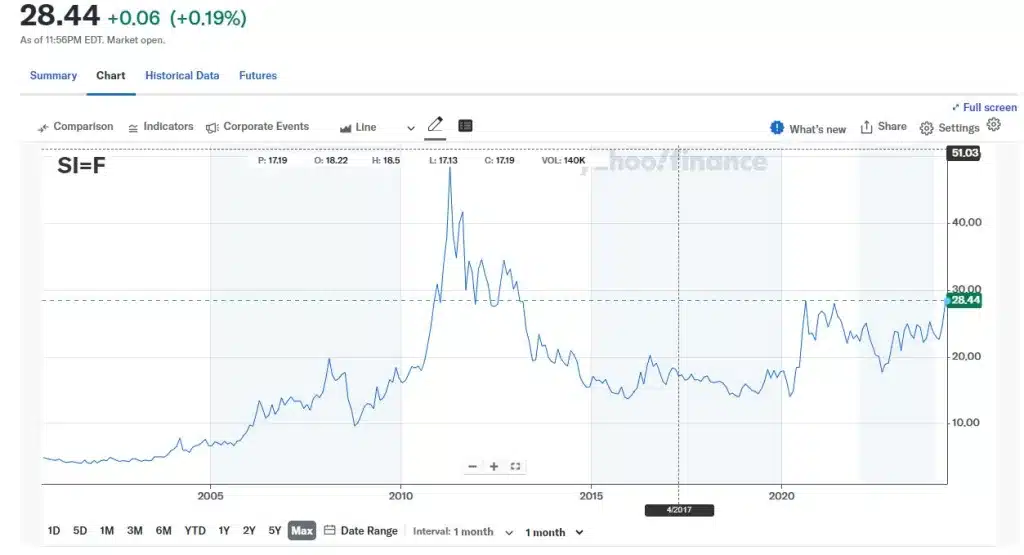
Leading financial institutions including Fintechzoom predict that silver prices in 2024 will show significant variability, driven by a combination of economic trends and market forecasts. Analysts at Fintechzoom have set a broad range of predictions for silver price, reflecting the complex interplay of factors that influence precious metals.
Fintechzoom projects silver to reach $30 per ounce by the end of 2024, driven by a combination of Federal Reserve rate cuts and decreasing U.S. yields. Similarly, Commerzbank and Saxo Bank echo this sentiment, each forecasting a target of $30 per ounce, citing strong industrial demand and potential easing of monetary policies.
On the higher end, InvestingHaven predicts silver prices could soar to between $34.70 and $48.00 throughout 2024, contingent on bullish market indicators and a potential shortage in the silver market. This reflects an optimistic outlook based on both technical and fundamental analyses. On the contrary, more conservative estimates from the World Bank suggest silver could hover between $20 and $25 per ounce, emphasizing the market’s inherent volatility and unpredictability.
These forecasts highlight the silver market’s sensitivity to a range of external pressures including geopolitical tensions, monetary policy decisions, and shifts in industrial demand, particularly in technology and renewable energy sectors. Investors should keep a close eye on these developments, as they could lead to significant price movements within short periods.
Which Factors Influence Silver Price?
Economic Indicators
Economic indicators play a pivotal role in shaping the trajectory of silver prices. Interest rates, for example, directly impact the attractiveness of non-yielding assets like silver. In periods of low-interest rates, such as those predicted by some analysts for late 2024 due to potential rate cuts by the Federal Reserve, silver becomes a more attractive investment compared to yield-bearing assets. Furthermore, inflation expectations also contribute to silver’s appeal. When inflation is high, investors often turn to silver as a store of value, driving up its price. This relationship highlights the metal’s role as both an industrial commodity and a monetary asset.
Geopolitical Tensions
Geopolitical events significantly affect investor sentiment and can drive rapid shifts in silver prices. For instance, ongoing tensions in Eastern Europe and the Middle East are known to drive investors towards safe-haven assets, including silver. The 2024 U.S. presidential election is another event that could lead to increased market volatility. Historical data suggests that silver prices tend to rise during periods of high political uncertainty, as investors look for stable value reservoirs away from geopolitical risks.
Industrial Demand
Silver’s industrial demand is a critical factor in its pricing. Various industries, particularly electronics and renewable energy sectors like solar panels, extensively use silver. The growing emphasis on green technologies is driving an increase in demand for silver, due to its crucial role in photovoltaic cells. Analysts from BMO and other financial institutions project an increase in silver prices driven by higher industrial usage and advancements in solar technology, which could significantly tighten the market if supply constraints continue.
These factors collectively underscore the complex and intertwined influences on silver prices, making it essential for investors to stay informed about global economic conditions, market sentiment, and technological advancements to make strategic investment decisions.
Fintechzoom Silver Price Investment Strategies
Investing in silver offers a variety of strategies suitable for different types of investors, each with unique risks and rewards. Fintechzoom will help you understand these options that can help you make informed decisions that align with your financial goals and risk tolerance.
Physical Silver Investments
One of the most straightforward methods of investing in silver is through purchasing physical silver, such as coins, bars, and other collectibles. This form of investment is favored for its tangibility and the direct control it offers over one’s assets. However, it also requires considerations for secure storage and insurance, which can add to the overall cost.
Silver Stocks and Mining Companies
Investors looking for potentially higher returns may consider stocks of companies involved in silver mining. These stocks often reflect silver prices but are also influenced by company performance and mining sector conditions. While they can offer significant returns, they also carry higher risk due to possible operational issues or market fluctuations affecting specific companies.
Silver ETFs and Mutual Funds
Exchange-traded funds (ETFs) and mutual funds that focus on silver allow investors to gain exposure to silver prices without the need to manage physical assets. These funds can be traded like stocks and are a popular choice for diversifying investment portfolios. ETFs, in particular, track the price of silver and are a convenient way to invest in silver as part of a broader commodities investment strategy.
Futures and Options
For more experienced investors, silver futures and options present a way to speculate on the price of silver with potentially high returns. These derivatives allow investors to leverage their positions, offering the potential for significant profit, but with a higher risk of substantial losses, especially if the market moves against the position.
Risk Management
Given the volatility of silver prices, implementing risk management strategies is crucial. Diversifying your investment across different assets, setting clear investment goals, and regularly reviewing your portfolio are vital steps. Additionally, using tools like stop-loss orders can help protect against market downturns.
Investing in silver requires careful consideration of market trends, personal financial goals, and the global economic landscape. Whether opting for physical silver or financial instruments linked to its value, staying informed and cautious will help maximize your investment’s potential.
Fintechzoom Future Outlook of Silver Price
Looking ahead, the future of silver prices appears poised for more dynamic changes, influenced by ongoing economic developments, industrial demand, and geopolitical climates. As we peer into the next few years, several potential scenarios could unfold, impacting the pricing trajectory of this precious metal.
Continued Volatility
The silver market is known for its volatility, and this is unlikely to change. Factors such as fluctuating industrial demand, especially from high-tech and renewable energy sectors, and varying investor sentiment in response to global economic conditions will continue to drive significant price swings. For example, an increase in silver’s industrial applications in areas like solar technology can create a surge in demand that outstrips supply, potentially pushing prices upward.
Influence of Monetary Policies
Monetary policies, particularly those of major economies like the United States, will significantly influence silver prices. Analysts predict that if the Federal Reserve shifts towards lower interest rates, it could decrease the opportunity cost of holding non-yielding assets like silver, thus boosting its appeal. Conversely, tightening monetary policies could pressure prices downward.
Geopolitical Risks
Geopolitical risks and stability will remain critical factors. Events that increase global uncertainty—such as tensions in the Middle East or changes in U.S. political leadership—tend to drive investors towards safe-haven assets like silver. These movements are often rapid and can result in sharp price increases.
Long-term Industrial Growth
Over the long term, the global shift towards sustainable technologies will likely boost silver demand, especially for its applications in photovoltaic cells for solar panels and various electronics. This sustained demand could provide a solid foundation for silver prices, supporting a gradual upward trend over the years.
Scenario Planning
Investors should consider these scenarios and plan accordingly. While the exact direction of silver prices is uncertain, preparing for multiple outcomes can help mitigate risks and capitalize on potential opportunities. Watching for key indicators—such as changes in industrial demand, investment trends, and economic policies—will be crucial for those looking to invest in silver.
In conclusion, while the future of silver prices holds uncertainty, it also offers opportunities for those who keep a keen eye on market trends and global events. Investors are encouraged to remain vigilant and adaptable, ready to adjust their strategies in response to new information and market conditions.
Frequently Asked Questions (F.A.Q)
Is it a good time to buy silver now?
Given the potential for silver to appreciate due to increased industrial demand and monetary policies favoring lower interest rates, it may be a good time to consider adding silver to your portfolio. However, keep in mind that silver prices are subject to volatility influenced by global economic conditions and geopolitical events.
How much silver should I include in my investment portfolio?
The amount of silver you should include depends on your overall investment strategy and risk tolerance. Silver can diversify your portfolio and act as a hedge against inflation, but it’s important to balance it with other investments due to its price volatility.
What are the best forms of silver to invest in?
Investors can choose from physical silver like coins and bars, silver ETFs, silver mining stocks, or derivatives like futures and options. Each has different levels of risk and management requirements. Physical silver is straightforward but requires storage and insurance, while stocks and ETFs offer easier liquidity but are influenced by additional market factors.
Can silver prices reach $100 per ounce?
While some industry insiders like Keith Neumeyer of First Majestic Silver believe silver could reach $100 per ounce in the future due to market cycles and increasing demand, especially in technologies like solar panels, this is a speculative scenario and would represent a significant increase from current levels.
What factors most influence silver prices?
Silver prices are influenced by a combination of industrial demand, investment trends, macroeconomic indicators (like inflation and the strength of the US dollar), and geopolitical stability. Supply constraints, particularly from mining outputs, also play a crucial role.
Wrapping Up
Silver remains an attractive investment due to its practical applications and potential as a financial safe haven. However, investing in silver, like any commodity, carries risks, especially given its price volatility. Prospective investors should consider their financial situation, investment goals, and market conditions before investing. Diversifying investments and staying informed about market trends can help manage risks associated with silver investing. For those interested in adding silver to their portfolios, it is prudent to consider both the potential rewards and the risks.

